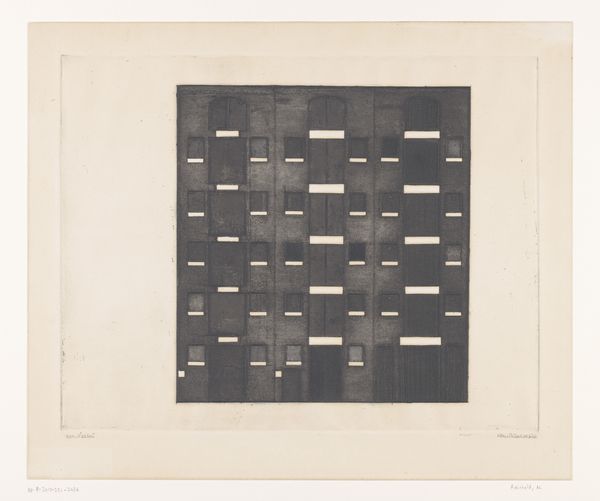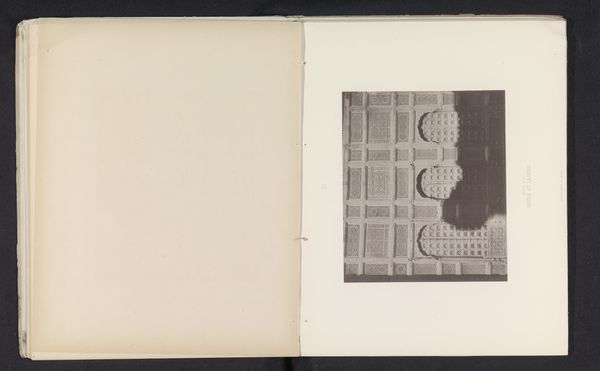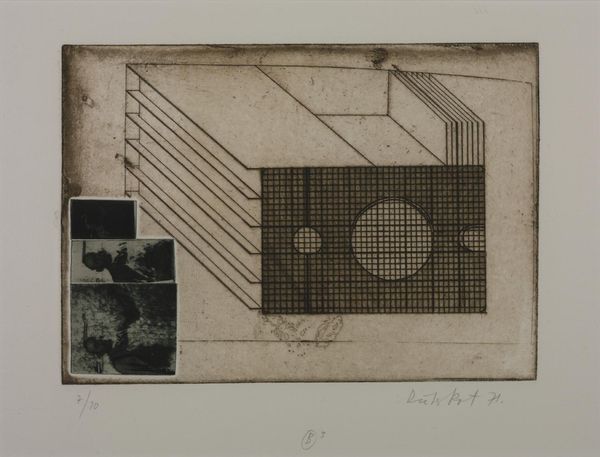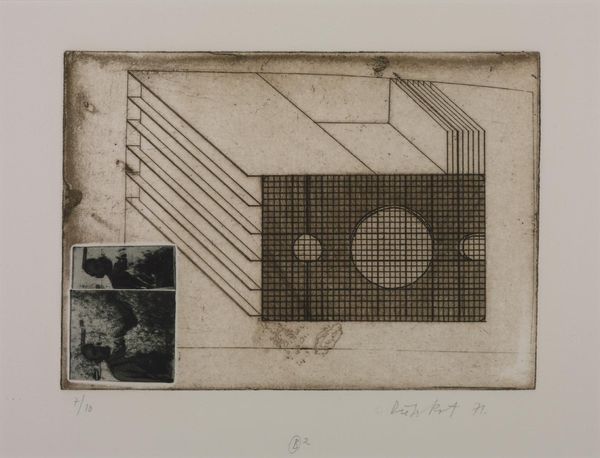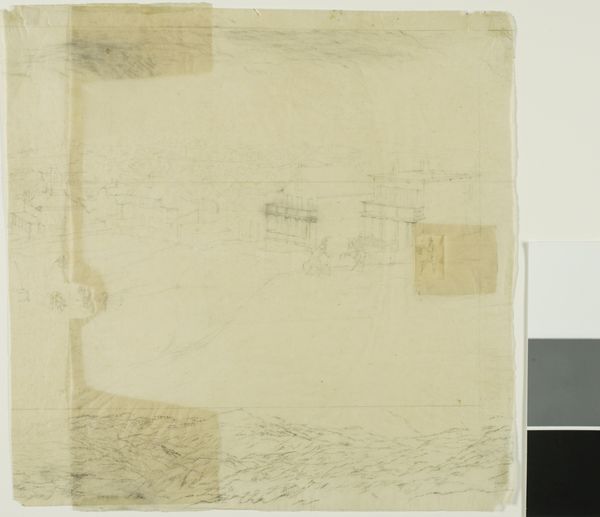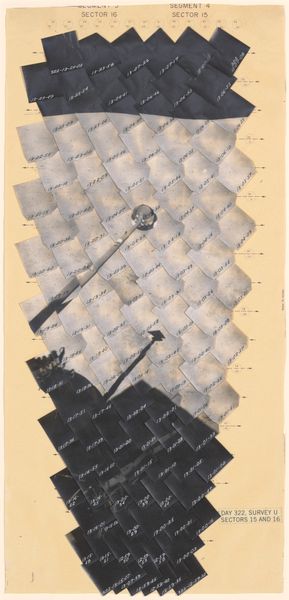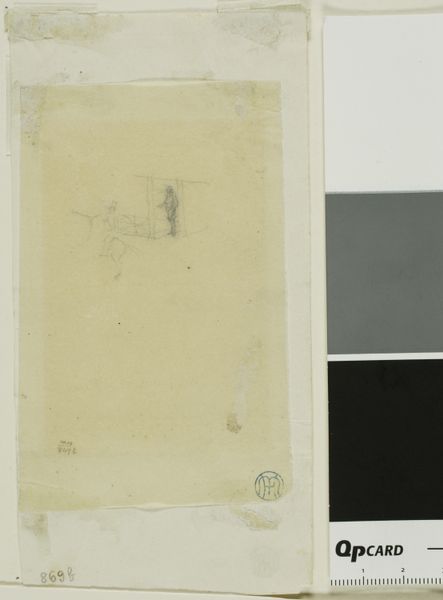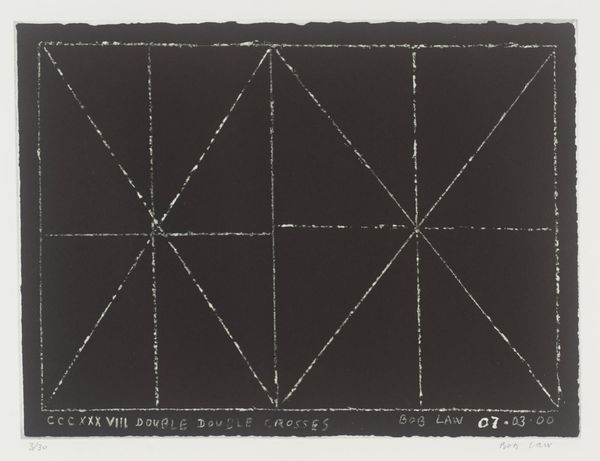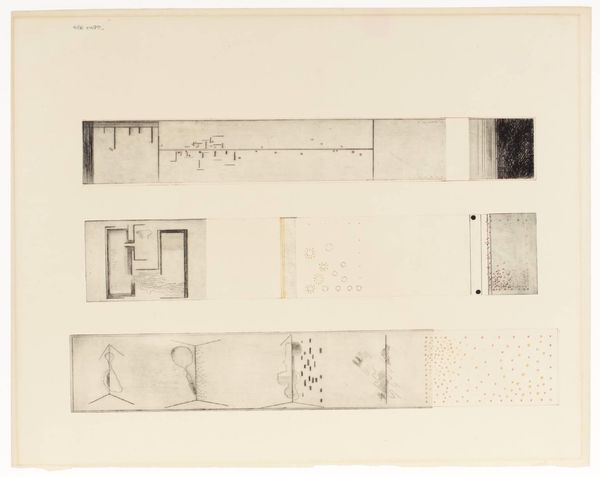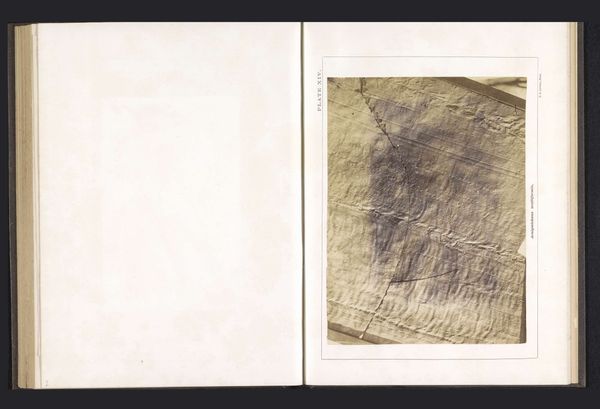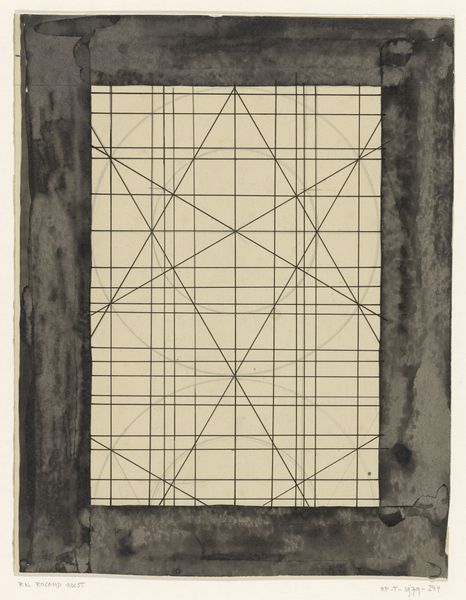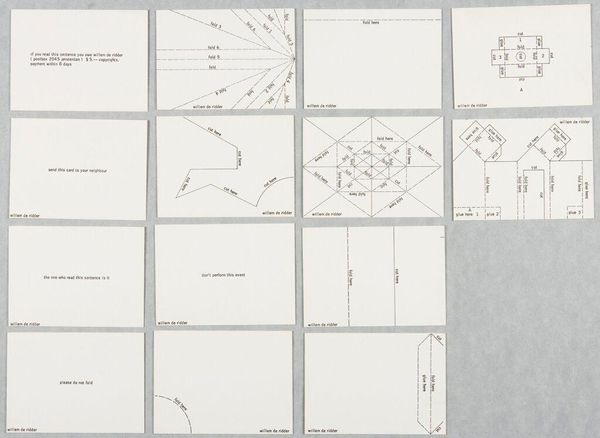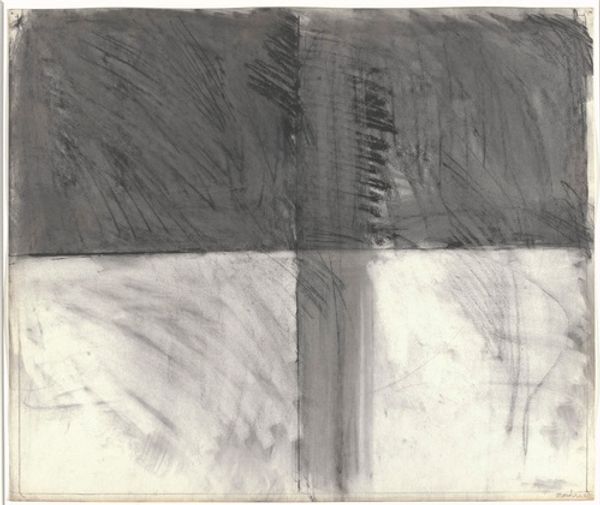
drawing, paper, ink
#
drawing
#
art-nouveau
#
paper
#
ink
#
line
#
watercolor
Dimensions: 28.8 x 45.3 cm
Copyright: Public domain
Curator: Here we have Koloman Moser's "Design for a Stage Decoration" from 1901, executed in ink and watercolor on paper. Editor: It's so architectural and graphic, almost like a blueprint. I am particularly interested in the different surface qualities of the individual squares within the grid, and the material's potential impact. What do you see in this piece? Curator: I see a reflection of the Wiener Werkstätte's mission, the Arts and Crafts ideals. Moser sought to dissolve boundaries between the fine and applied arts. He designed furniture, textiles, even graphics. Look closely. How do the variations in each grid square challenge traditional notions of artistic skill versus craft production? Editor: The patterns almost feel like samples of wallpaper or fabric… were these designs meant to be reproduced? It seems this stage design involved a labor intensive methodology. Curator: Exactly! The individual squares, each with a unique texture and pattern, suggest modular elements meant for mass production. The labor of the artisan is present, but within a framework of potential industrialization. It challenges the concept of the artist as a singular genius, shifting focus to the collective effort of production. How does this shift in perspective affect our understanding of the value and consumption of art? Editor: So, it’s not just about what the design *represents*, but the very real material and social processes behind its creation. That is definitely different. Curator: Precisely. Think about the consumption habits that this artistic production fuels. Moser’s stage set could only truly be appreciated with an audience. And ultimately, someone would buy the drawing we're seeing today. Do we know where the physical materials used for this set actually originated? Those considerations broaden the artistic horizon and can radically reframe this image as a whole! Editor: I never thought of art having such a direct tie to social and industrial structures, beyond the purely aesthetic, or conceptual. Now I do! Thanks for pointing that out. Curator: My pleasure. Looking at the materials and their means of production is a fundamental way to approach so much art.
Comments
No comments
Be the first to comment and join the conversation on the ultimate creative platform.
